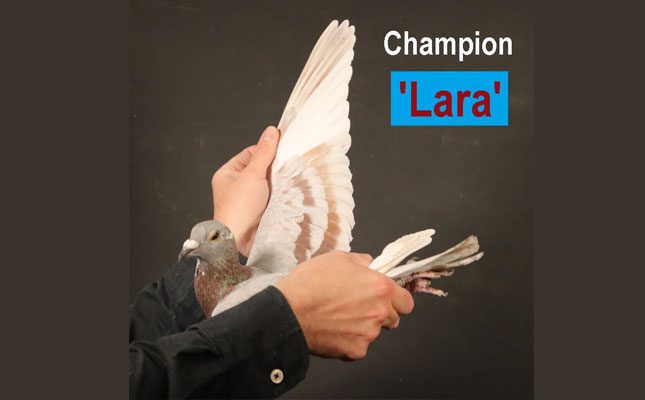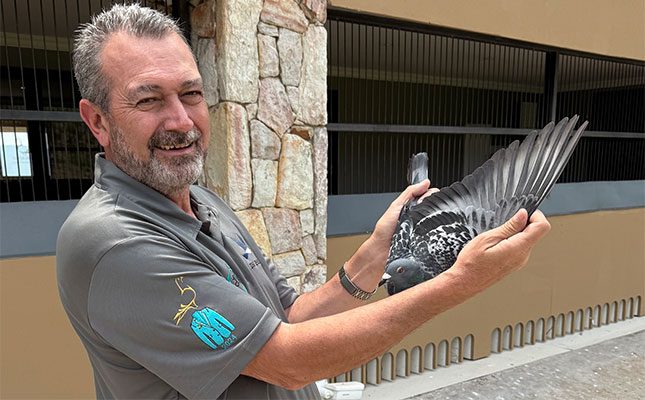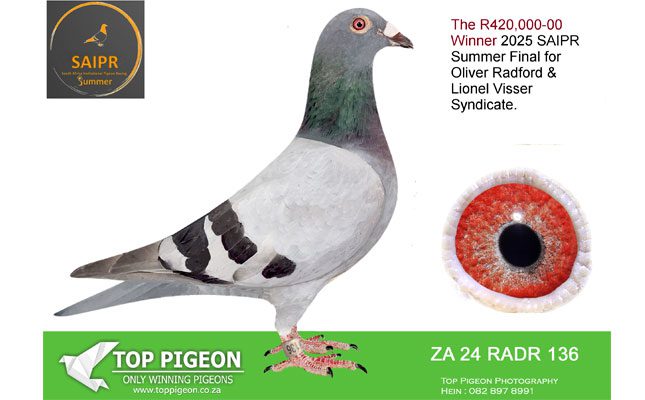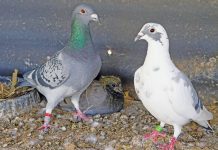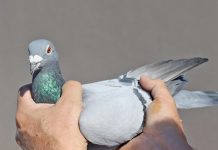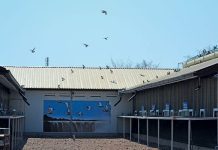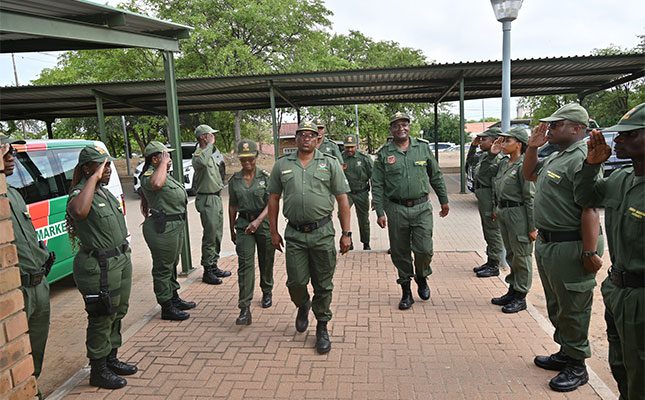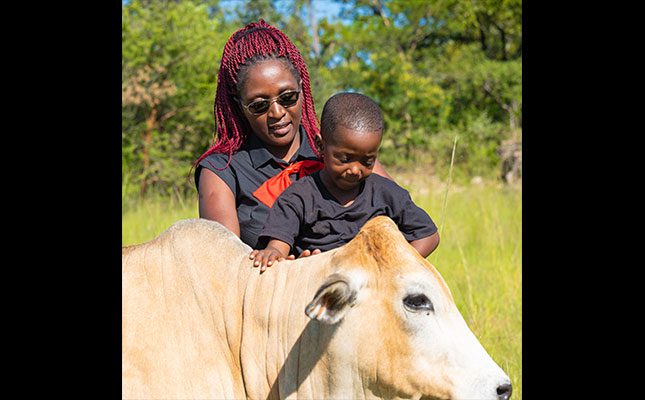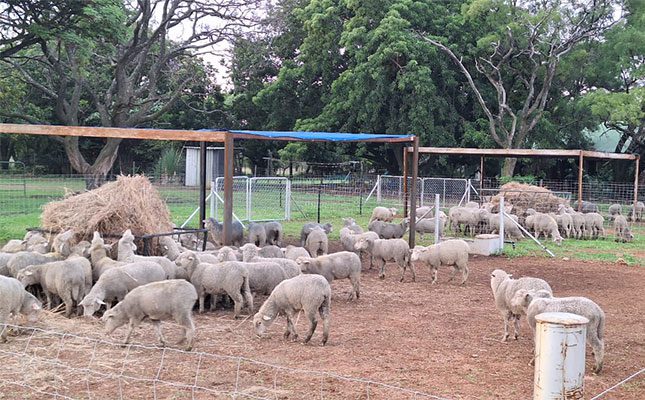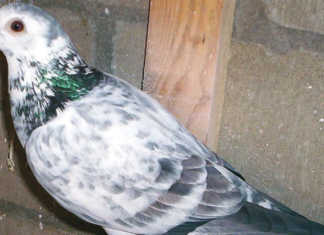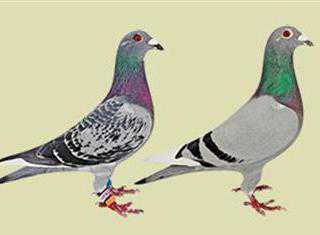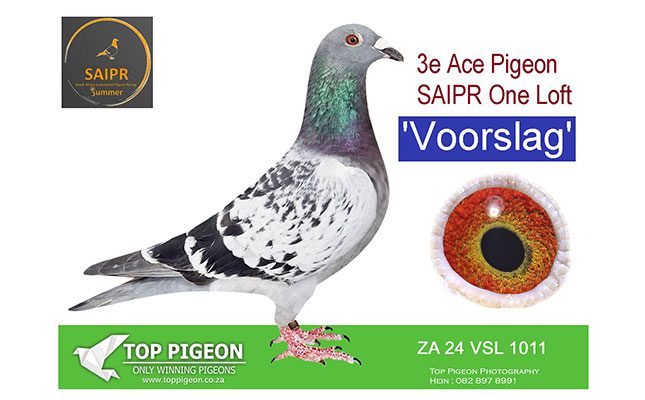
In case you missed my earlier article, the South Africa Invitational Pigeon Race (SAIPR) was established by Billy Kitchenbrand and Gerhard van Aswegen, and is based in Krugersdorp, 30km west of Johannesburg, Gauteng. Fanciers enter their pigeons into the SAIPR to compete for cash prizes.
The entry fee is R30 000 for a team of five pigeons, three of which carry ‘activation’ status. The remaining two are reserve pigeons to replace a missing bird during the training series.
If one or both of an entrant’s reserve pigeons hold out until the main race, the entrant can activate them for a R5 000 fee per bird and entered in the SAIPR Challenge Race, which is held concurrently with the final.
Reserve pigeons not taken up by an entrant for the SAIPR Challenge Race are available to the public. A pigeon can be activated under a company name, allowing staff to join in the fun.
Cash and prizes
A total R3,8 million payout, divided into R1,6 million for the SAIPR Summer Series and R2,2 million for the SAIPR Winter Series, is no pocket change.
A brand-new car for the finisher in 67th place in the final honours 1967, the birth year of both Kitchenbrand and Van Aswegen.
Wise words
“Study the pedigrees of the scoring pigeons at SAIPR One Lofts’, says Van Aswegen. “Many successful entrants in the SAIPR bred their scoring birds from pigeons acquired in previous races. This contributes to a customised gene pool suited to the loft location, temperature, and general demands of the training system, which may differ substantially from one ‘money’ loft to another.”
He adds that the average SAIPR Summer Series velocity for the 2025 season was below 1 200m/minute.
I had a look at the stats of ‘Scarlet 52’, the Grand Average SAIPR 2025 Summer Series Champion, entered by Butch Einkamerer. Her winning average was 1 181m/minute.
The average loft velocity of the four Hot Spots was 1 142m/minute. It was won by ‘Spiral Galaxy’, bred by Umberti Lofts, at just under 1 100m/minute. Eight of the training flights prior to the Hot Spots and final was held between 82km and 150km, with an average velocity of just over 1 360m/minute.
Shape and size of the birds
Van Aswegen says the front flying pigeons in this series were medium to large. In support of Kitchenbrand’s known preference, the slightly deeper-keeled pigeons with stronger frames handled the demands of a tough season much better.
This contrasted with the general world view that smaller pigeons fare better in the slower velocities. Fanciers should take note of these statistics when planning their breeding schedules.
Champ of Champions
Melt van Schoor won the Champ of Champions title by ranking as the top contender in both the SAIPR 2024 Winter and 2025 Summer series.
He says he was privileged to have been born into a ‘pigeon family’. His dad, uncle, and nephews were pigeon fanciers.
Van Schoor won his first pigeon race at the age of nine. He is a member of the Krugersdorp Pigeon Racing Society under the banner of the West Rand Racing Pigeon Association, racing birds from his garden Loft.
Over the years, Van Schoor began to take an interest in One Loft Racing and decided to focus on the selection of his pigeon genetics to score in the money races. However, he says his passion for breeding outweighs the financial reward.
Van Schoor also breeds birds for his friends to enter the money races, which provides him with an opportunity to test more of his stock birds’ offspring.
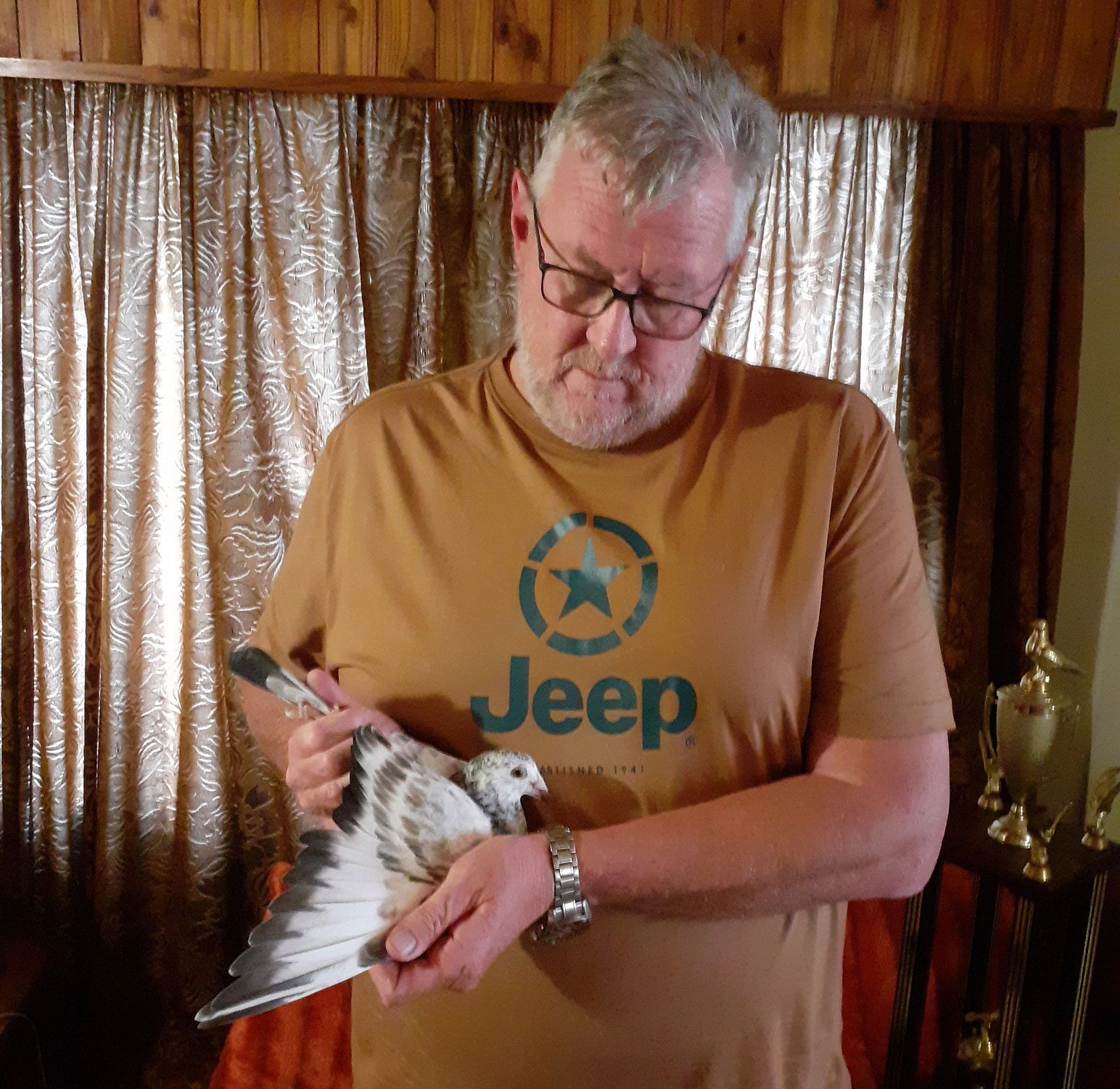
In the 2024 SAIPR Winter Series final, Van Schoor’s birds placed sixth overall, with five positions in the top 53, including two Hot Spot winners. Starting with the fifth Ace Pigeon placing, he bred six Ace Pigeons within the Top 50 – all in the top 10% of the competition field.
Starting with seventh place in the 2025 SAIPR Summer Series final, Van Schoor’s pigeons took six positions in the Top 40 and nine in the Top 100. He also bred the third-best Ace Pigeon, with four in the Top 40 and eight in the Top 100.
Past highlights with Van Schoor’s birds at the SAIPR include three wins and six equal wins in the Hot Spots; first and second in the Group Averages; fourth, tenth, and eleventh in the final; and second and third in the SAIPR Challenge Race.
Van Schoor’s breeding process
Van Schoor does line breeding and and soft inbreeding, combined with some crossbreeding to provide hybrid vigour for the One Lofts.
He analyses all the factors involved at a specific One Loft and studies the pedigrees of the birds that score in similar weather conditions.
Van Schoor notes all statistical data, and then buys and breeds into the scoring pigeon gene pool for a specific One Loft. However, changes in the usual weather patterns and wind direction on race day may not accurately reflect the ‘preferred’ scoring gene pool of that loft’s location. Therefore, loft data should be collected over a few seasons to determine its demands in your choice of breeding.
He has found that the same pigeons can succeed across different One Lofts in South Africa under specific criteria. You can introduce a single pigeon from your target loft into your own gene pool. If its pedigree partly comes from your existing main stock, it is advisable to buy that bird to build on genetics you know well.
Matching your pairs within an all-round (any distance) group, such as those which Van Schoor owns, can produce birds that may show dominance in either fast or slow velocities. Identify candidates with capabilities at different velocities and enter from both groups to improve your chances whether a final is fast or slow.
For more information on the SAIPR, phone Gerhard van Aswegen on 082 921 1747.

